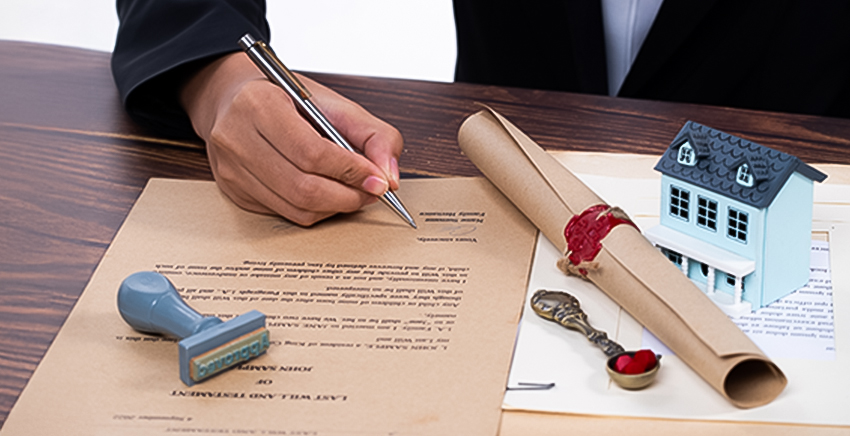If there were an Indian dream like the famous American dream, owning a house would be the primary milestone in it. It is a substantial achievement that brings space, safety, and strength to one’s life. However, buying a house is not easy as it is a long-term monetary and emotional commitment. Home buyers need a good sense of the proper budget, property type, location, amenities, its builder’s reputation, and more.
Further, when buying a house, one should remember that the price quoted by the seller is not the definitive price. A few lakhs will be added to the price while registering it. Because stamp duty, registration charges, cess, and surcharges will be levied.
All the costs, when put together, can come up to 7% to 10% of the total market value of the house or even more. In most Indian states, 5% to 7% of the total market worth of a property is charged as stamp duty, while 1% is charged as a registration fee.
Pune’s Real Estate Market, Property Registration & Stamp Duty Charges
Pune is one of the few Indian cities that has revived rapidly and have made it among the country’s top cities for its real estate market. The main reasons are the excellent residential projects in Pune, the advanced business models, and the improved clarity between sellers and buyers. Pune constantly creates newer standards regarding infrastructure, locality, projects, amenities, design, and more.
As per the latest report, the stamp duty in Pune has risen by 1% as an additional metro cess is being charged on all property purchases from April 1, 2025. The property registration charges in Pune for properties below Rs 30 Lakh is 1% of the total property value, and for properties above Rs 30 lakh, it is capped at Rs 30,000.
Until December 31, 2020, the Maharashtra government had lowered the stamp duty from 5% to 2%. Post-December, the government levied a 3% stamp duty until March 31, 2021. However, on April 1, 2021, that stamp duty retreated to 5%.
After the additional metro cess charge, home buyers in Pune will now have to pay 7% (Stamp Duty 5% + Local Body Tax 1% + Metro Cess 1 %) of the property’s value as stamp duty. However, female homebuyers will get an added 1% concession for registering the house in their name.
Also, on March 23, 2025, the Maharashtra government announced a stamp duty exemption on properties on resale from 1 to 3 years. Now stamp duty will be paid only on the difference in the price of a property and not on the total amount for 3 years. Various experts in cooperatives and stamp duty sectors have expressed that the decision will improve the number of investments, promote sale-purchase contracts and construction businesses, and ultimately bring in more job prospects.
Comprehensive Breakdown of Costs
Understanding stamp duty and its registration charges in Pune is crucial for property buyers, as these fees form a significant portion of the total transaction costs. The rates may differ depending on the buyer’s gender (women may get a reduced rate), the property’s location, and whether it’s a residential or commercial unit.
| Category | Stamp Duty Charges | Registration Charges |
|---|---|---|
| Male | 7% (Stamp Duty 5% + Metro Cess 1% + Local Body Tax 1%) | 1% – For properties below 30 Lakh Rs. 30,000 – For properties above 30 Lakhs |
| Female | 6% (Stamp Duty 4% + Metro Cess 1% + Local Body Tax 1%) | 1% – For properties below 30 Lakh Rs. 30,000 – For properties above 30 Lakhs |
| Joint | 6.50% | 1% – For properties below 30 Lakh Rs. 30,000 – For properties above 30 Lakhs |
Recent Legislative Changes
The real estate landscape is consistently shaped by evolving government policies, and stamp duty regulations in Pune have seen notable changes in recent years. For instance, during the COVID-19 pandemic, the Maharashtra government introduced temporary reductions in stamp duty to stimulate the property market. Though this benefit has since expired, other incentives may still be applicable. Policies such as rebates for women buyers or first-time homebuyers have been introduced, allowing specific groups to benefit from lower stamp duty. Staying informed about these legislative updates is not just advisable, it’s essential. It puts you in control, as these updates can reduce the financial burden on property buyers significantly. It’s advisable for buyers to frequently check government notifications to capitalize on potential savings.
Pune’s Stamp Duty vs Other Cities
Pune’s stamp duty rates stand competitive compared to other major cities in India. While Pune charges 6% for residential properties, Mumbai’s rates are slightly lower at 5% due to special concessions. On the other hand, cities like Delhi and Bangalore charge higher rates, with Bangalore’s duty increasing to 7%. Conversely, Kolkata has more variable rates depending on property value, ranging from 5% to 7%. This comparison helps prospective buyers understand Pune’s position in the national context and whether it’s a cost-effective city for property investments. Factors like location, government initiatives, and local taxes contribute to this disparity, which may influence the decision-making process for homebuyers or investors.
Effect on Property Buyers
Stamp duty and registration charges represent significant additional costs for property buyers in Pune, affecting both the initial capital outlay and long-term return on investment. For instance, a property valued at ₹1 crore could see buyers paying around ₹6-7 lakh in combined charges. This can deter some buyers or prompt them to adjust their property expectations. These costs can also impact financing options, as they aren’t typically covered under home loan disbursements. Be cautious and prepared for these additional costs, as they can significantly influence your financing options and the overall cost of your property purchase.
Step-by-Step Process Guide
The property registration process in Pune involves several clear steps, each requiring careful attention. First, the buyer must calculate the applicable stamp duty and registration fees based upon the property’s market value. The necessary documents, including the sale deed, identity proof, and address proof, must be compiled. Once all documents are ready, stamp duty payments can be completed online or at designated banks. After paying the stamp duty, the homebuyer must book an appointment at the sub-registrar’s office to register. At the appointment, the buyer and seller must be present, along with two witnesses, to sign the documents. The entire process usually takes a few hours, but it’s advisable to account for additional time in case of document verification.
Factors That Determine Property Registration & Stamp Duty Charges
- Property Type
The property type, whether an apartment/flat or an independent house, specifies the difference in the land registry stamp duty charges. A flat/apartment costs more than an independent house. - Property Location
The property’s location decides the stamp duty costs. If the property is located in an urban area, the stamp duty will be higher than those in suburban or rural areas. - Property Market Value
Stamp duties are calculated as a percentage of the property’s total market value. Old properties usually draw less stamp duty, and new buildings attract a high charge. This is because the value of old buildings would have been depreciated. - Age & Gender of Property’s Owner
The age of the property’s owner is a crucial factor in deciding the stamp duty costs. Nearly all state governments have subsidized stamp duty costs for senior citizens. Likewise, women also get a concession on stamp duty if the house is registered in their name.
Conclusion
Registering a property is crucial as it saves the owner’s interest and guards the ‘property title’ in case of disputes. Therefore, it is advised to register a property once the sale process is finalized. For residential projects in Pune, the current stamp duty is 7% of the property’s market value, and the registration charges for properties below Rs 30 Lakh is 1 % of the total property value. For properties above Rs 30 lakh, it is capped at Rs 30,000.





